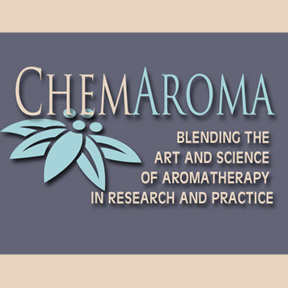|
Today's Blog Post By Dr. Bill Kurtin
People new to the use of essential oils often wonder “Will aromatherapy work for me?” Realistically, although there is much scientific evidence that aromatherapy works for many conditions and for many individuals, it is not possible to predict a specific outcome for a specific person – for example, you may love the smell of essential oil of ylang ylang while another person may find it sickeningly sweet. Why? Because there are many factors that determine the efficacy of treatment, including how the essential oil is administered. In aromatherapy the oil is usually applied by one of three methods – inhalation, topical massage, or oral ingestion. Direct inhalation is the fastest way to get the oil molecules into your system. The science involved is easy enough to understand, so we’ll focus on that method as we try to solve the puzzle. When you inhale the vapors of an essential oil, individual molecules of the oil enter your nose and interact with special proteins called receptors. These proteins sit on the ends of very sensitive nerve fibers that protrude into the nasal cavity. The interaction of oil molecules with receptor proteins ultimately results in nerve impulses being sent to your brain and central nervous system. This is the key step in the mechanism that determines your sense of smell. These nerve signals are also what give rise to the therapeutic effect of the oil. Easy enough, right? But wait a moment – if everyone inhales the same way, shouldn’t we all smell the same thing? The most important piece of this puzzle is that there is more than one type of protein receptor. In fact, humans have up to as many as 400 different types of odor receptors. Each type preferentially interacts with a different component of an essential oil. A simple analogy is to think of each type of protein receptor as a lock, and essential oil molecules as keys. It takes a different key to fit into each of the 400 different locks. When you inhale essential oil vapor, the resulting odor might be due to 100 different keys fitting into 100 different locks, generating lots of complex nerve impulses. But the final, and most relevant, piece of the puzzle is that scientists have recently shown that as much as 30 percent of that set of receptors (locks) differs between any two individuals. That means that 100 or more of your set of receptors differs from those of the person next to you! This is all determined by your DNA, the same way it determines that you have blue eyes or brown hair, etc. This newly-discovered variability in sets of odor receptors then easily accounts for the variability in an individual’s sense of smell, and thus also for the variability in the therapeutic effects of essential oils. Fortunately some oils, such as lavender, with its calming properties, seem to work on the vast majority of people, suggesting that that particular set of receptors is widespread in the population. So will it work for you? Bottom line – your nose knows, but you can only find out by giving it a try. Better yet, try it with a friend, and compare nose notes!
2 Comments
|
Dr. Bill Kurtin is a biochemist, with a distinguished record of teaching and research at Trinity University in San Antonio, TX. Archives
March 2020
Categories
|


 RSS Feed
RSS Feed